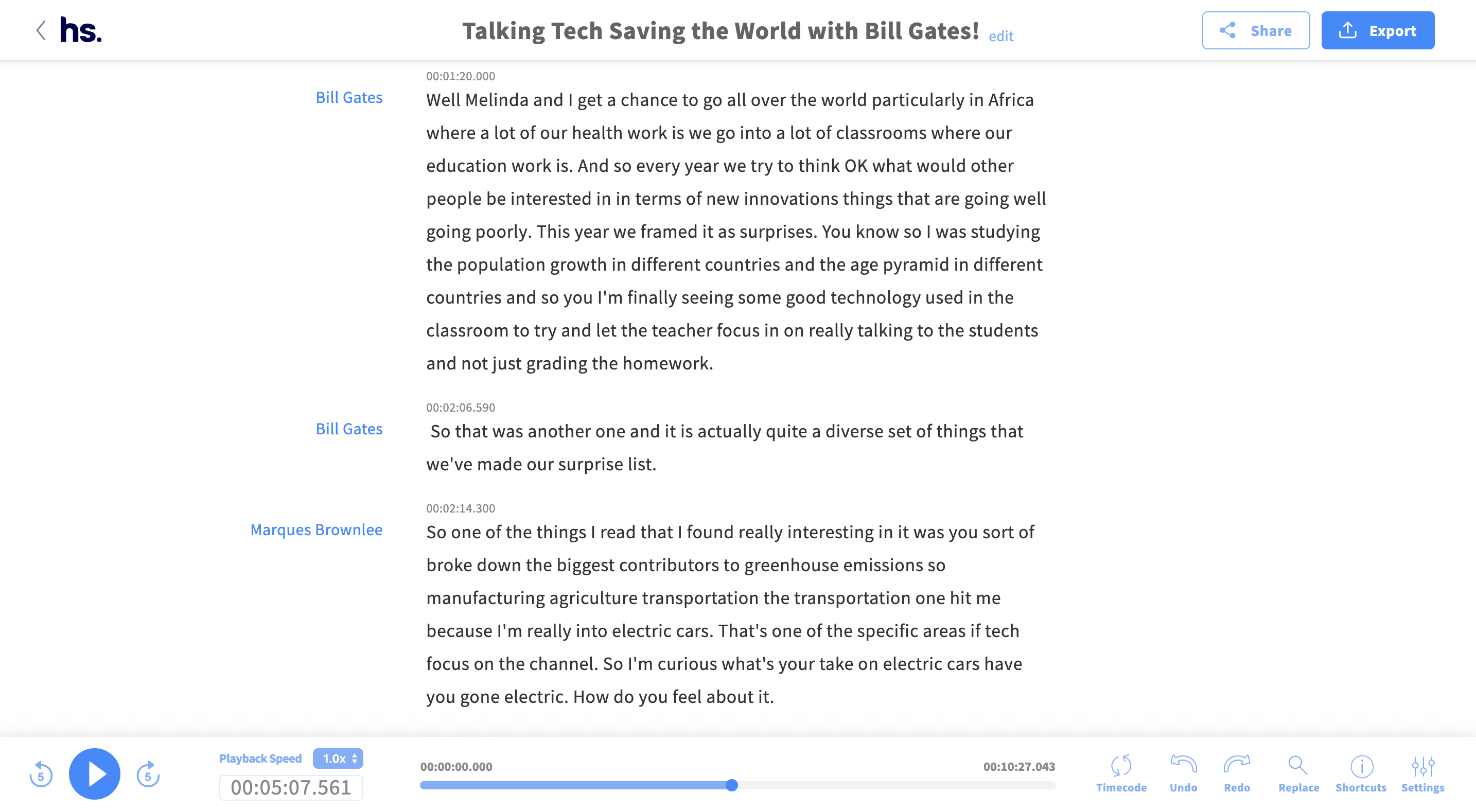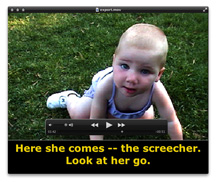Transcription software is very useful for those users who have large chunks of audio and video files to be converted into a text document. There are many such tools which are free or offer a free trial and seek for subscription and up gradation charges. Before interviewing with ScribeAmerica, you should have a general idea of what a medical scribe does and you should be aware of the time commitment and extensive training that is involved to prepare you to become a successful scribe. 2 people found this helpful Medical Scribe at ScribeAmerica over 2 years ago.
We recently published a detailed guide on how to transcribe an an interview, but sometimes you need to look at real examples of transcribed interviews to understand the exact format, structure, and level of detail. So in this post we’ll share excerpts from an interview that was transcribed verbatim.

An interview transcript can have varying levels of detail based on the requirements of the reader. These levels can be categorized as
- Standard Verbatim
- True Verbatim
- Intelligent Verbatim.
Let’s take a look at example transcripts from each of these categories.
Standard Verbatim is probably the most popular transcription style out there. It involves detailed transcription with by light editing, creating a transcript that is highly accurate yet not overloaded with unnecessarily detail.
The style captures every word that is said on the recording, leaving out parts like false starts, repetitions, ambient sounds and non-verbal communication. This makes the transcript cleaner and easier to read, while still including all the relevant parts.
Verbatim transcription is great for when you need to know exactly what was said on a recording but don’t necessarily need the extreme detail of true verbatim transcription.
Note: Verbatim and True Verbatim are often used interchangeably, but they’re very different. Read on to find out how.
A true verbatim transcript captures EVERYTHING on the recording – including words, fillers like uhm, uh, you know etc., ambient sounds, and non-verbal communication such as laughter, pauses, and coughing.
As you can see, there is no editing involved and everything is typed just as it is on the recording.
This style is ideal for research projects where HOW something is said as important as WHAT is being said.
This style of transcription involves creating a clean, print-ready transcript that has been edited in detail to correct grammatical errors, improve sentence structure (paraphrasing) and remove distractions like:
- Fillers (um, uh, you know, etc.).
- False starts (incomplete sentences).
- Repetitions (repeated words and sentences).
What you basically get with this style is an error-free transcript that is true to the recording, yet easy to read and ready-to-publish. It is ideal for content publishers and business transcripts.
Source of Audio for Transcripts: Oral History Project – Center for Oral and Public History, California State University, Fullerton

Read Next:
By Susan P. Joyce

A major benefit of emailed thank-you notes is that they can be sent -- and received -- very quickly.
A traditional handwritten thank you will take at least one day to be delivered and, depending on the organization, may sit in the mail room or on someone's desk for several days before it is read.
Surveys by both CareerBuilder and Accountemps have indicated that an emailed thank you note is acceptable to most employers in the USA.
However, if the organization feels very 'old school,' consider sending a formal thank you via USPS (a.k.a. 'snail mail') in an envelope with a stamp as a follow up to your emailed thank you.
Remember that employers will view your thank you notes as a 'work sample' demonstrating the kind of employee you would be. So, focus on sending the most professional thank you notes that you can, with good spelling, grammar, and use of technology.
Writing Your Thank-You Message
Leave the TO: field empty until you have completed, spell checked, and proofread the message (or put your own address in that field until it is ready to be sent).
Adapt the text in this sample (below) to your circumstances, and customize it to each individual who interviewed you.
If you know the person who is receiving this message, you can be less formal, as in 'Dear Mary' vs. 'Dear Ms. Jones' -- but err on the side of being more formal rather than less formal when in doubt.
Don't make the mistake of sending exactly the same message to everyone who interviewed you at an employer! Emails are easy to share. Vary the details a bit, or use the second, more customizable sample below.
[More Interview Email Thank You Do's and Dont's.]
Sample Thank-You Messages

Replace thetext below [in brackets] with whatever terms are appropriate for you and your situation. Send this very soon after the interview, preferably on the same day as the interview.
Simple Thank-You Message Sample
This is a basic, simple thank you message.
Subject: Thank you for the [Job Title] interview on [date]

Scribeamerica Interview
Dear [Mr./Ms. Last Name]:
Thank you very much for your time today [or yesterday or the date] to interview me for the position of [job title]. I appreciate the opportunity to learn more about this job, to meet you and [names of other interviewers], and to see your facility [or offices, location, whatever is appropriate].
As we discussed, I have [months or years] of experience with [technology, tools, or qualification(s) you have that seemed most important in the interview]. With my background and experience, I believe that I could become a contributor to your team very quickly.
I am excited about this opportunity to join [organization name]. Please do not hesitate to email or call me if you have any questions or need any additional information.
I look forward to hearing from you [whenever they said they would be in touch or in 10 days if they didn't give you a date].
Best regards,
[Your name]
[Your job title or tag line, like 'eCommerce Customer Support Specialist']
[LinkedIn Profile URL]
[Phone number -- not your work number if you are employed]
More Complex Thank-You Message
Replace thetext below [in brackets] with whatever terms are appropriate for you and your situation.
Subject: Thank you for the [Job Title] interview on [date]
Dear [Mr./Ms. Last Name]:
Thank you very much for your time today [or yesterday or the date] to interview me for the position of [job title]. I appreciate the opportunity to learn more about this job, to meet you and [names of other interviewers], and to see your facility [or offices, location, whatever is appropriate].
[Reference anything you said that seemed important to the interviewer, like: As we discussed, I find the technology related to using cloud computing fascinating and an amazing opportunity for the future, but security is also a major concern. Keeping XYZ Company's information safe would be a top priority for the person in this job, and I would love to dig deeply into the protective technologies, as well as the threats, to avoid future problems.]
[If possible, reference any 'connection' you may have made, like: I enjoyed finding someone else who attended XYZ College and also roots for the hockey team. Hope they make the NCAA Division finals next year!]
As we discussed, I have [months or years] of experience with [technology, tools, or qualification(s) you have that seemed most important in the interview]. With my background and experience, I believe that I could become a contributor to your team very quickly.
I am excited about this opportunity to join [organization name]. Please do not hesitate to email or call me if you have any questions or need any additional information. Download fluke port devices driver.
I look forward to hearing from you [whenever they said they would be in touch or in 10 days if they didn't give you a date].
Interview Scribe
Best regards,
[Your name]
[Your job title or tag line, like 'eCommerce Customer Support Specialist']
[LinkedIn Profile URL]
[Phone number -- not your work number if you are employed]
[For more information: see Email Thank You Do's and Dont's and Guide to Interview Thank-You Notes with more Interview Thank-You Note Samples.]
Staying in Touch After the Thank You's Are Sent
Hopefully, you will get an email in response to this message, but don't panic if you don't hear from them on their deadline. MUCH may be happening that has nothing to do with you at all.
Read 5 Absolute Must-Ask Questions for Your Next Job Interview to get the details you need about how their hiring process works so you have contacts and their guidelines.
If they said they would contact you in a week, DO reach outafter five business days to see what is happening if they have not contacted you when they said they would. If you forgot to ask when they would be contacting you after the interview, five business days is a sufficient gap to demonstrate that you are interested, but not a nuisance.
DO NOT contact them daily -- or even weekly -- for a decision.
DO move on with your job search. This opportunity may happen or it may not. Don't 'pause' your job search until you know. Keep searching. Best case, you'll have a choice to make between two (or more) jobs. Worst case; you won't lose any momentum.
The Bottom Line
Many think that thank-you notes are trivial, but thank-you notes, done well, are a great way to differentiate yourself from other candidates. Take the time to follow the Email Thank You Do's and Dont's, and send your thank you notes very quickly. If you forgot to send immediate thank you messages, send them as soon as you can --better late than never! Good thank you notes demonstrate the high quality of your work, and all the characteristics you may claim, like: attention to detail, ability to communicate, comfort with technology, and knowledge about the job and the employer.
More About Interview Thank You Notes
- Sample Job Interview Thank You to the Person Who Referred You,
- Turning Rejection into Opportunity - the thank you after you are turned down for the job
Interview Script Sample
[More: The Waiting Game After the Interview by recruiter Jeff Lipschultz and Job-Hunt's 2017 study, Job Seekers: What Happens After You Apply.]
| NO spam! Privacy Policy |
Online job search expert Susan P. Joyce has been observing the online job search world and teaching online job search skills since 1995. A veteran of the United States Marine Corps and a recent Visiting Scholar at the MIT Sloan School of Management, Susan is a two-time layoff “graduate” who has worked in human resources at Harvard University and in a compensation consulting firm. Since 1998, Susan has been editor and publisher of Job-Hunt.org. Follow Susan on Twitter at @jobhuntorg and on Facebook, LinkedIn.
More about this author..
